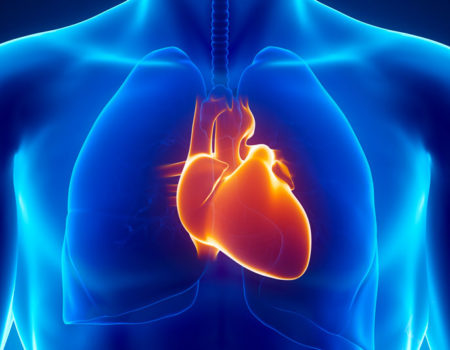Barth syndrome is a rare condition that occurs almost exclusively in males. Symptoms include an enlarged and weakened heart. The condition is present at birth or becomes evident early in life. Life expectancy is shortened and there is no treatment.
The laboratory of Madesh Muniswamy, PhD, in the Long School of Medicine at The University of Texas Health Science Center at San Antonio, found a clue about the processes that underlie this devastating condition.
The body runs on energy made by cell structures called mitochondria. The Muniswamy lab studied the interaction of a protein called MCU (mitochondrial calcium uniporter) with a phospholipid (fat) called cardiolipin. This fat is part of the mitochondria walls.
The team found that cardiolipin’s binding with MCU acts as an on switch for energy production. When the two bind together, calcium ions rush into the mitochondria to produce energy needed during physiologic processes such as fasting and feeding.
The connection to Barth syndrome? Loss of energy.
“We observe reduced abundance and activity of MCU in cells of mammals that model Barth syndrome, and we also see a partial loss of cardiolipin in the cells,” Dr. Muniswamy said.
“Consistently, MCU is also decreased in the cardiac tissue of human Barth syndrome patients, raising the possibility that impaired MCU function contribute to Barth syndrome pathology,” he said.
The study, coauthored with colleagues at Texas A&M University, Harvard and MIT, is in Proceedings of the National Academy of Sciences.
# # #
An essential role for cardiolipin in the stability and function of the mitochondrial calcium uniporter.
Sagnika Ghosh, Writoban Basu Ball, Travis R. Madaris, Subramanya Srikantan, Madesh Muniswamy, Vamsi K. Mootha, Vishal M. Gohil
First published: June 29, 2020, Proceedings of the National Academy of Sciences
https://doi.org/10.1073/pnas.2000640117
The Long School of Medicine at The University of Texas Health Science Center at San Antonio is named for Texas philanthropists Joe R. and Teresa Lozano Long. The school is the largest educator of physicians in South Texas, many of whom remain in San Antonio and the region to practice medicine. The school teaches more than 900 students and trains 800 residents each year. As a beacon of multicultural sensitivity, the school annually exceeds the national medical school average of Hispanic students enrolled. The school’s clinical practice is the largest multidisciplinary medical group in South Texas with 850 physicians in more than 100 specialties. The school has a highly productive research enterprise where world leaders in Alzheimer’s disease, diabetes, cancer, aging, heart disease, kidney disease and many other fields are translating molecular discoveries into new therapies. The Long School of Medicine is home to a National Cancer Institute-designated cancer center known for prolific clinical trials and drug development programs, as well as a world-renowned center for aging and related diseases.
The University of Texas Health Science Center at San Antonio, also referred to as UT Health San Antonio, is one of the country’s leading health sciences universities and is designated as a Hispanic-Serving Institution by the U.S. Department of Education. With missions of teaching, research, patient care and community engagement, its schools of medicine, nursing, dentistry, health professions and graduate biomedical sciences have graduated more than 37,000 alumni who are leading change, advancing their fields, and renewing hope for patients and their families throughout South Texas and the world. To learn about the many ways “We make lives better®,” visit http://www.uthscsa.edu.
Stay connected with The University of Texas Health Science Center at San Antonio on Facebook, Twitter, LinkedIn, Instagram and YouTube.


